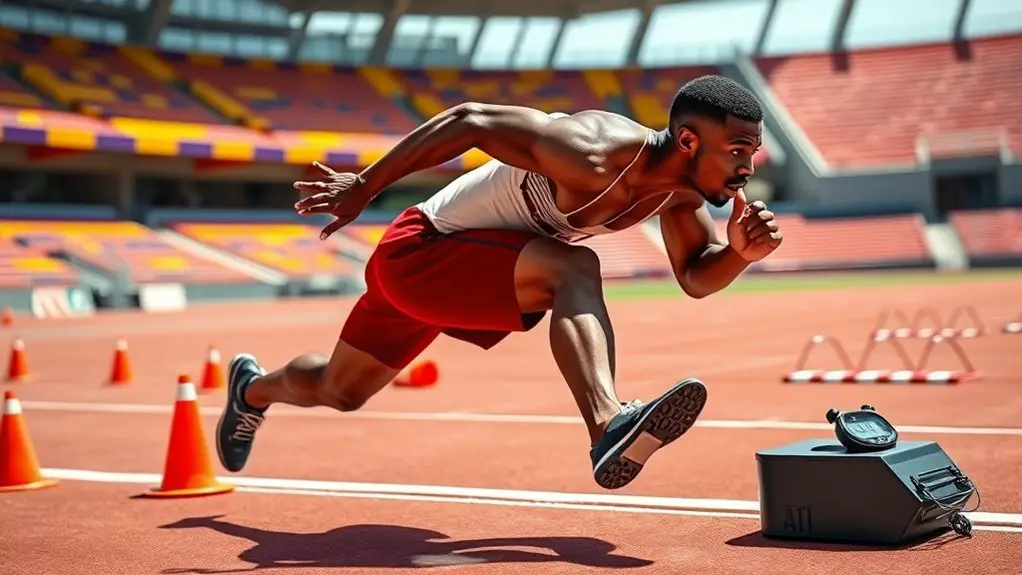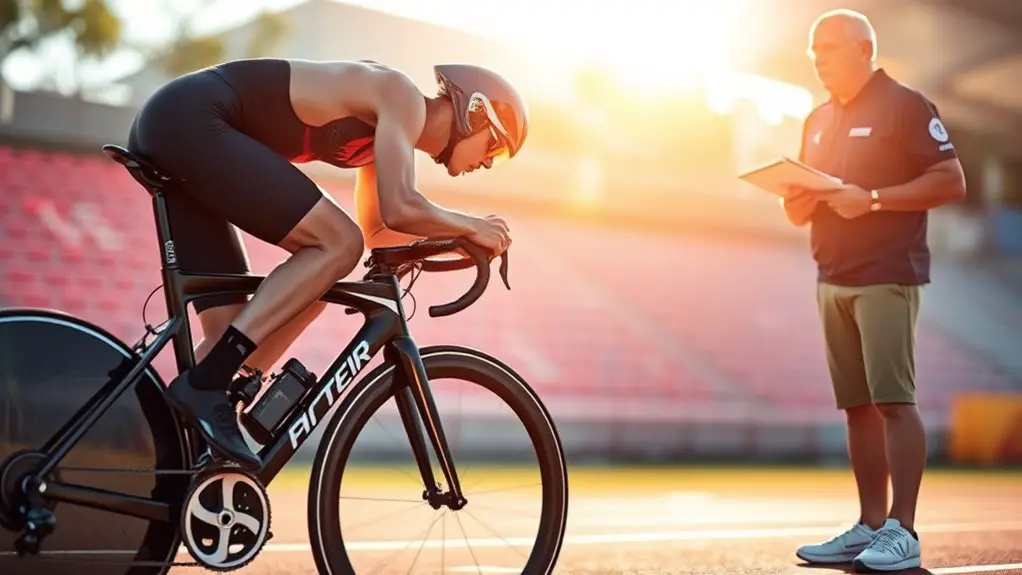Advanced speed, agility, and endurance training focuses on mastering key techniques and workouts designed to elevate your performance. You'll want to work on sprint drills, plyometrics, and agility-specific drills, all while maintaining a balanced workout routine. Don't forget to track your progress and adjust your training as needed, ensuring recovery is part of your plan. By refining these aspects, you'll push your limits, revealing your full athletic potential. There's more to discover about optimizing your training regimen.
Understanding the Fundamentals of Speed, Agility, and Endurance
Speed, agility, and endurance are the cornerstones of athletic performance. When you grasp these fundamentals, you're revealing your potential for greatness. Speed is about how quickly you can move from point A to B, while agility focuses on your ability to change direction swiftly without losing balance. Endurance, on the other hand, is your capacity to sustain physical activity over time. Understanding these elements allows you to push boundaries and experience true freedom in your athletic journey. You don't just want to run fast; you want to dance with the wind, navigate obstacles effortlessly, and conquer distances. Embrace these fundamentals, and you'll find that your body can achieve more than you ever thought possible. Your journey to freedom starts here.
Key Components of an Effective Training Program
To access your full athletic potential, you need a well-structured training program that targets speed, agility, and endurance. Here are the key components to focus on:
- Goal Setting: Define clear, achievable objectives that inspire you and give your training direction.
- Variety in Workouts: Mix different training styles—intervals, plyometrics, and endurance sessions to keep things exciting and prevent plateaus.
- Recovery Protocols: Incorporate rest days and active recovery to allow your body to heal and grow stronger.
- Progress Tracking: Regularly assess your performance to see improvements and make necessary adjustments in your program.
Techniques to Enhance Speed and Acceleration
While many athletes focus on endurance or strength, enhancing speed and acceleration is essential for achieving peak performance in any sport. To kickstart your journey, incorporate sprint drills that mimic game situations, allowing you to develop explosive starts. Plyometrics can also boost your power; think box jumps or bounding. Don't forget the importance of form—proper mechanics can shave off precious seconds, so practice your running posture and arm swing. Interval training is another great addition; alternating between high-intensity sprints and recovery helps build speed endurance. Finally, prioritize recovery and nutrition; your muscles need time to adapt and grow stronger. By focusing on these techniques, you'll not only feel freer on the field but also enhance your overall game performance.
Developing Agility Through Specialized Drills
Building on the foundation of speed and acceleration, developing agility is essential for maneuvering complex movements in sports. By incorporating specialized drills, you'll enhance your ability to change direction quickly and efficiently. Here are four effective drills to get you started:
- Ladder Drills: Use an agility ladder to improve foot speed and coordination.
- Cone Drills: Set up cones in various patterns to practice sharp turns and quick stops.
- Plyometric Hurdles: Jump over small hurdles to build explosive power and agility.
- Shuttle Runs: Sprint back and forth between markers to develop acceleration and deceleration skills.
Embrace these drills, and you'll reveal your agility, giving you the freedom to navigate the field with confidence and finesse.
Building Endurance for Optimal Performance
Endurance is essential for sustaining performance throughout a game or competition, as it allows you to maintain your intensity and focus when it matters most. Building endurance isn't just about long runs; it's about finding what works for you. Incorporate varied workouts like interval training, tempo runs, and hill sprints to keep things exciting. Mix in strength training to support your muscles and prevent fatigue. Don't forget to prioritize recovery—rest days and proper nutrition are vital. Listen to your body; it'll guide you toward what you need. By consistently challenging yourself and adapting your training, you'll reveal your potential. Embrace the journey, enjoy the freedom of movement, and let your endurance elevate your performance to new heights.
Monitoring Progress and Adjusting Training Strategies
How do you know if your training is effective? Monitoring your progress is essential for achieving your goals and ensuring your training strategies are on point. Here are four key indicators to keep an eye on:
- Performance Metrics: Track your speed, agility drills, and endurance levels regularly.
- Recovery Time: Notice how quickly you bounce back after intense workouts; faster recovery often means improved fitness.
- Heart Rate Variability: A higher variability can indicate better cardiovascular health and adaptability.
- Personal Feelings: Tune in to how you feel during workouts—are you more energized and motivated?
Frequently Asked Questions
How Does Nutrition Impact Speed, Agility, and Endurance Training?
When it comes to training, you've gotta fuel your body right. Nutrition's the backbone of your performance; it boosts energy, aids recovery, and sharpens focus, ensuring you're always at the top of your game.
What Role Does Mental Preparation Play in Athletic Performance?
Mental preparation's essential for your athletic performance. It helps you build confidence, focus, and resilience. By visualizing success and managing stress, you can release your full potential and embrace the freedom to perform at your best.
Are There Specific Recovery Techniques for Enhancing Performance?
Yes, there are specific recovery techniques that can enhance your performance. Techniques like active recovery, proper hydration, stretching, and adequate sleep help your body repair and rebuild, allowing you to perform at your best consistently.
How Can I Prevent Injuries During Advanced Training?
"An ounce of prevention's worth a pound of cure." To prevent injuries during training, you should warm up properly, listen to your body, rest adequately, and incorporate flexibility and strength exercises. Stay aware and enjoy your freedom!
What Equipment Is Necessary for Advanced Training Sessions?
For advanced training sessions, you'll need essential gear like quality footwear, resistance bands, cones, agility ladders, and a stopwatch. These tools help you enhance your performance while allowing you the freedom to push your limits.




